London Planetree (Sycamore)
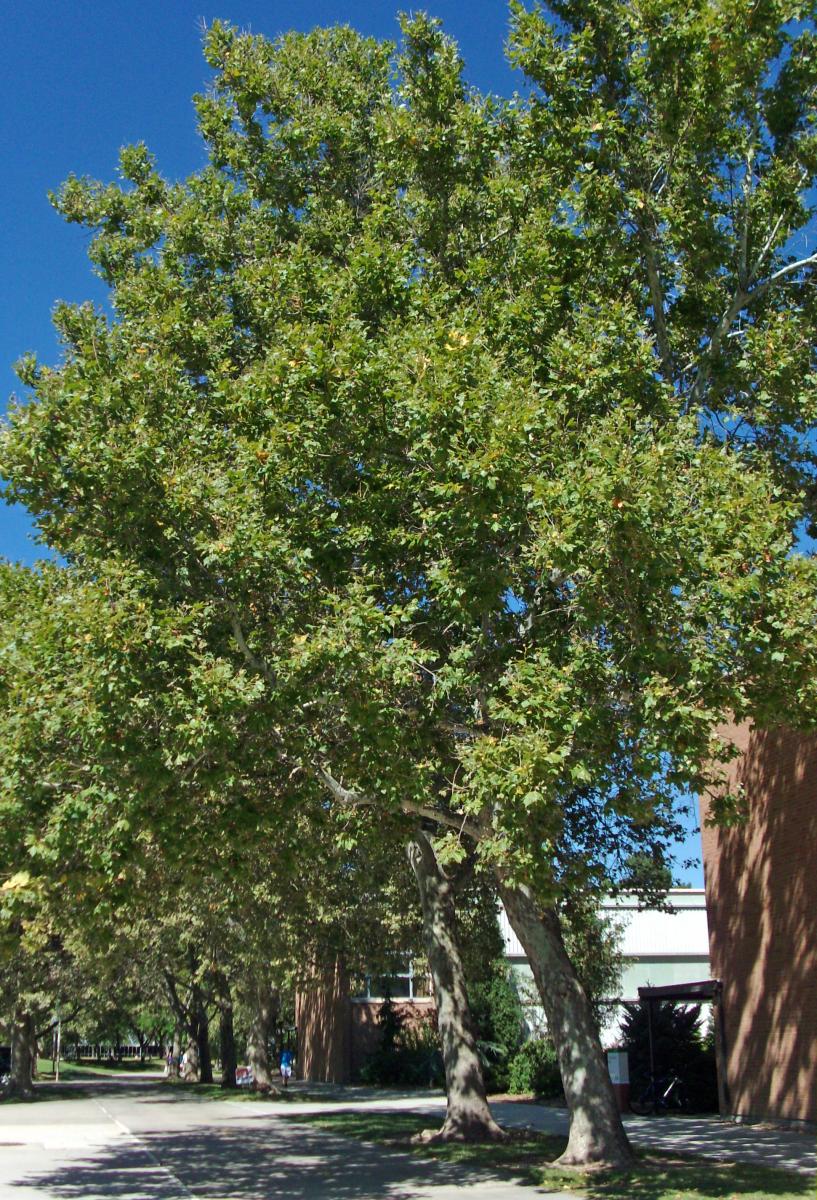
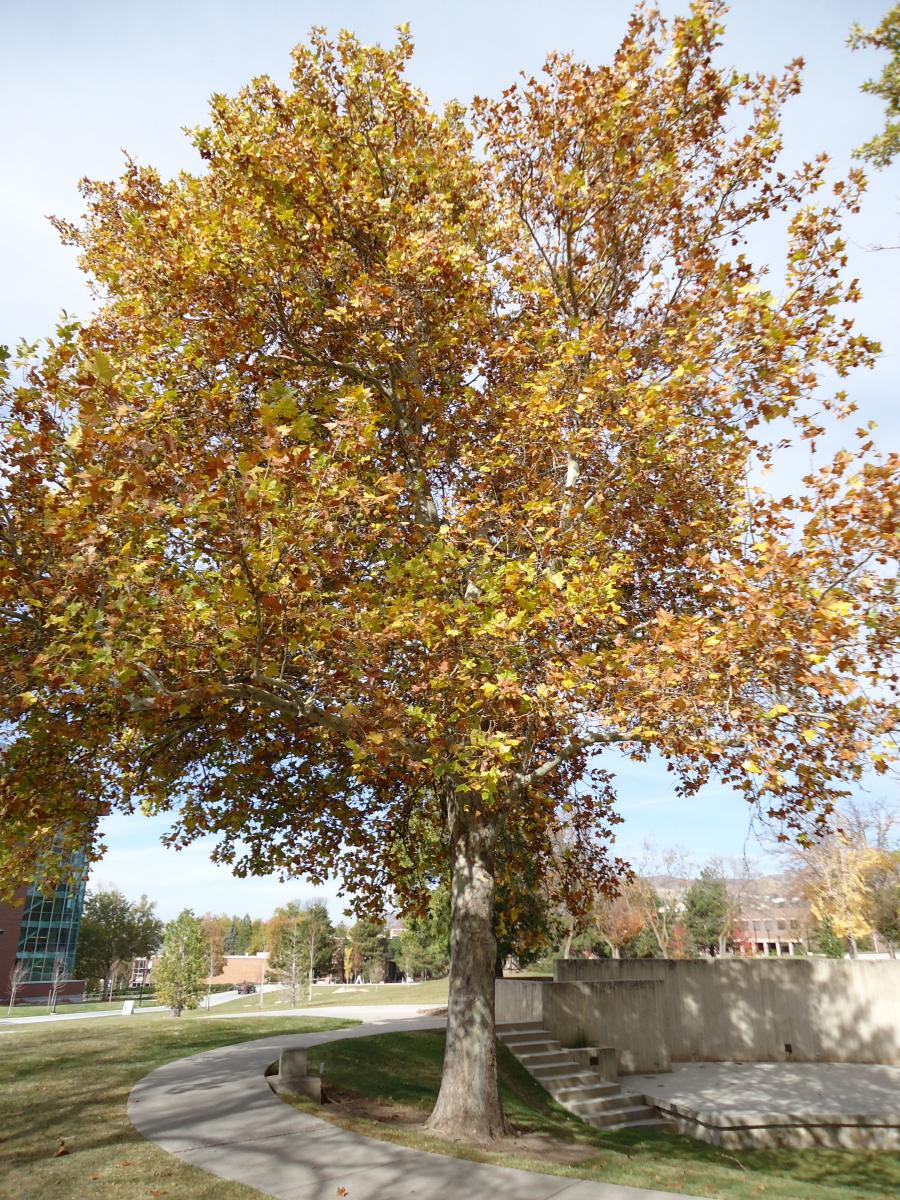
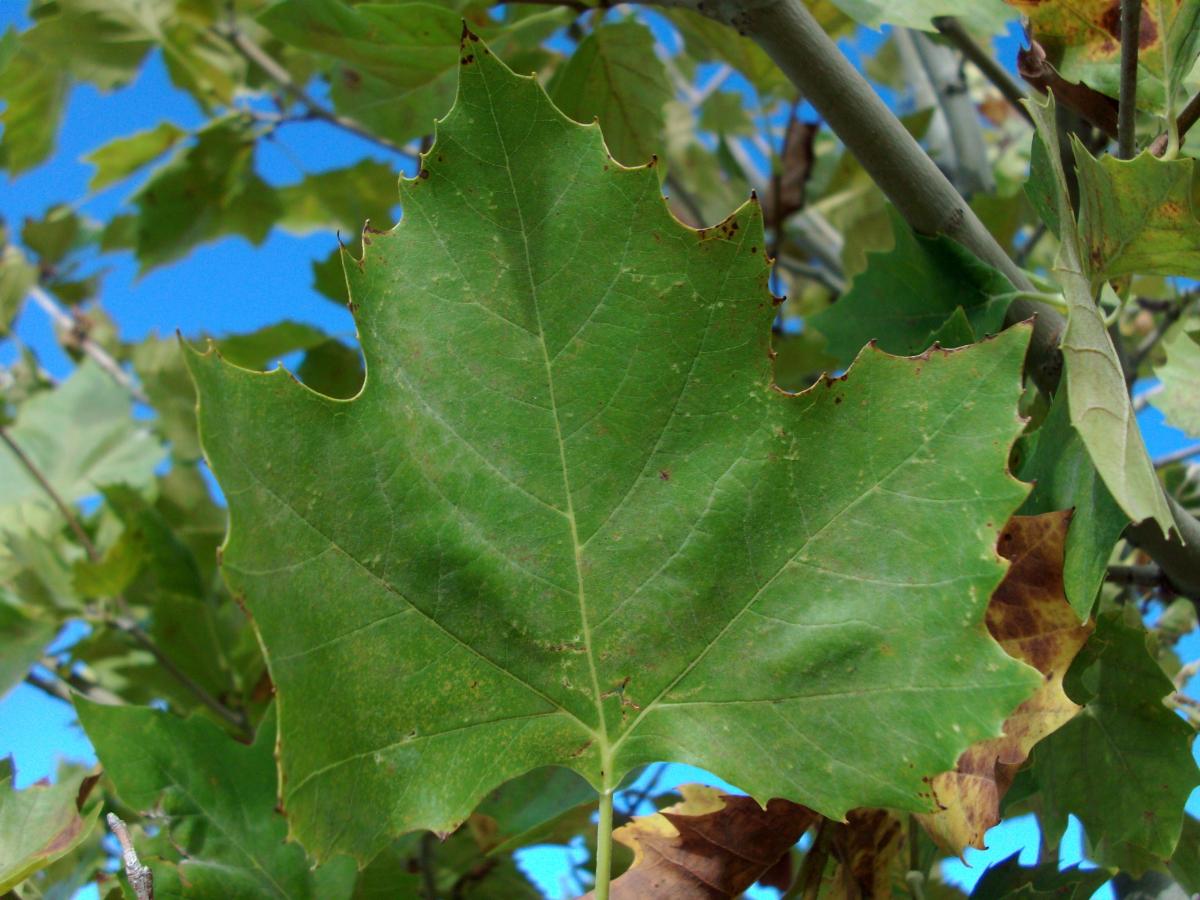
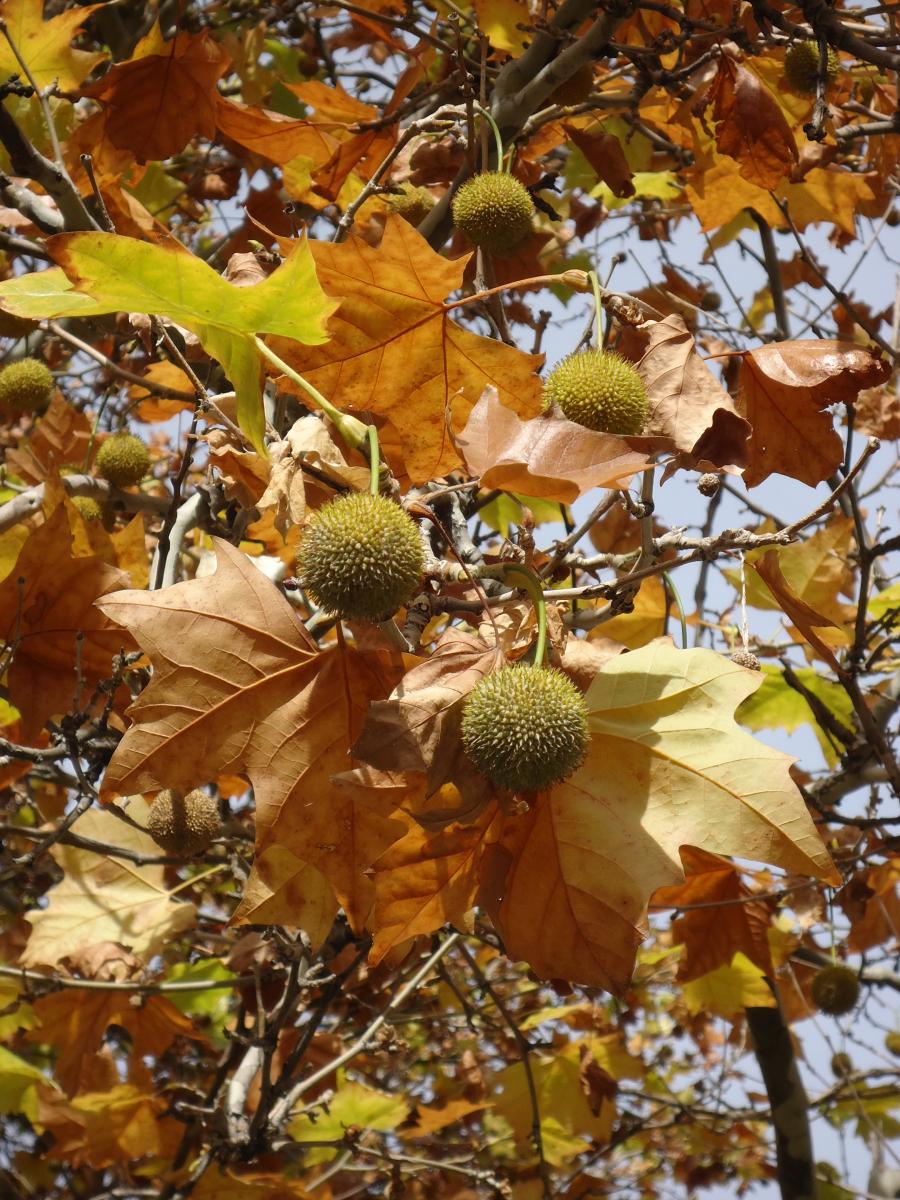
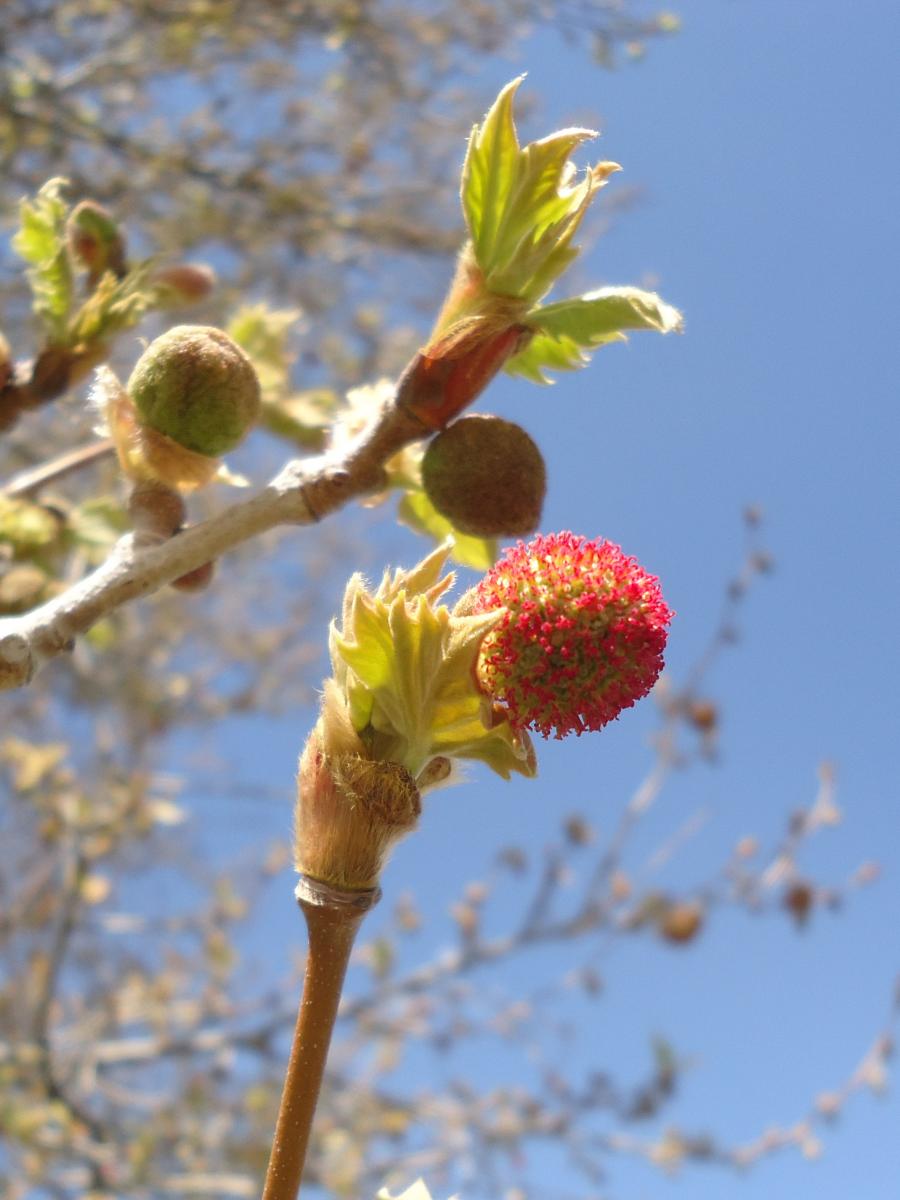

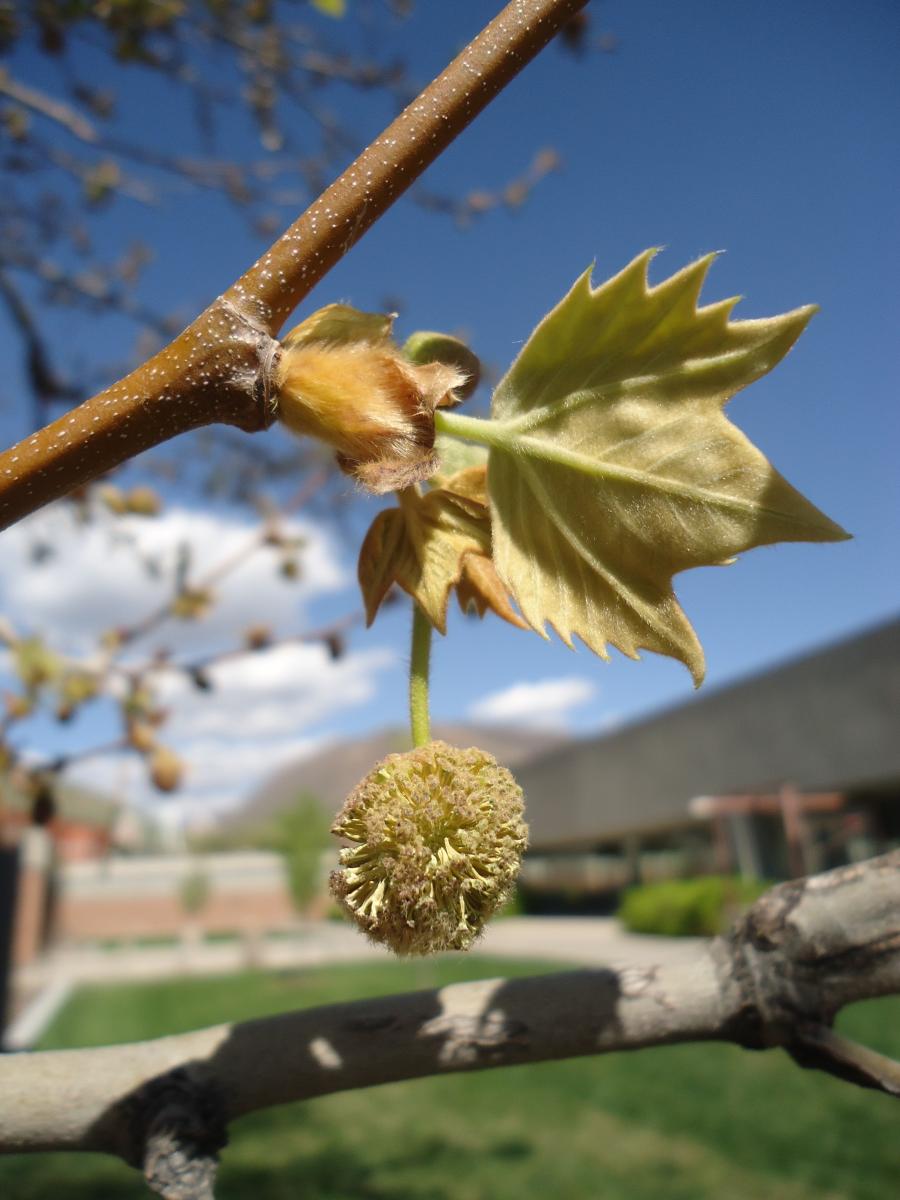
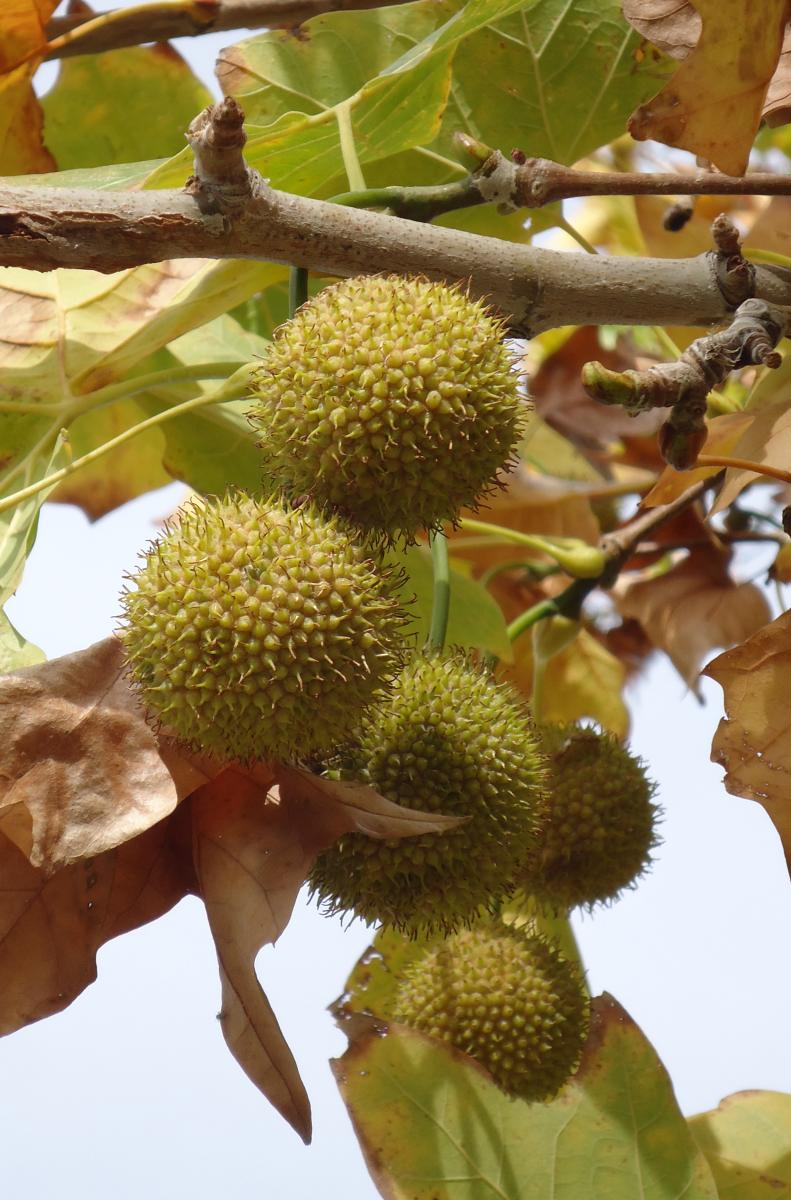

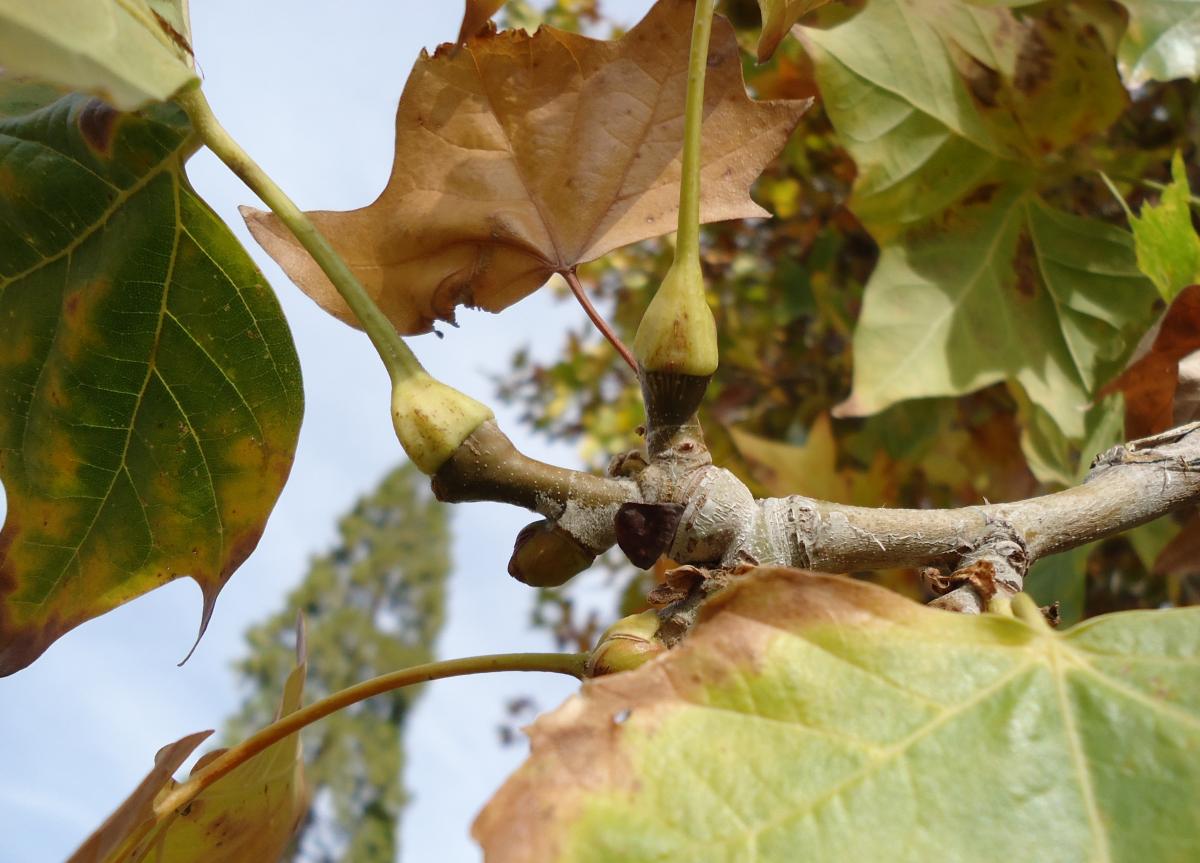

Platanus x acerifolia
Leaves: Deciduous. Maple-like leaf shape with 3 to 5 lobes. Central leaf lobe is usually longer than wide. Leaves grow 6 to 7 inches long and 8 to 10 inches wide. Medium to dark green in summer. Fall leaves are patchy yellow-brown and not very showy.
Bark/Twigs: Bark varies in color from olive-green to light brown and cream. Bark exfoliates and has a camouflage pattern that resembles tan, gray and brown puzzle pieces.
Flowers/Fruit: Flowers are not showy and grow in small, round groups during late spring (April). Spikey, brown, 1 inch spherical seed balls are borne in groups of 2 or 3. Spheres contain many seeds and break apart into brown and white fluff when fallen from tree.
Mature size and shape: Large. 70 to 100 feet high x 65 to 80 feet wide. Pyramidal when young. Develops with age into a large, open, wide-spreading outline with massive branches.
General information/special features: Plant in full sun to light shade. Highly adaptable to almost any soil, but moist, rich, well-drained soil is best. Withstands pollution, smoke and grime of big cities. So widely planted in London because of its adaptability that it acquired the name, London Planetree. They grow quickly and can live for hundreds of years.Thick, large branches and unique bark give this tree a good winter interest.
Landscape use and maintenance: Large, tough shade tree. Excellent for large open areas such as parks. Its roots can lift and buckle roads, curbs, and sidewalks. Fast growing rate. High maintenance. Leaves tend to fall all winter until spring when the new leaves appear. Leaves and fruit have fine hairs which can cause itching or irritation to the nose, throat, and skin when raking. Easily transplanted. Prune in winter. Can withstand heavy pruning.
USDA Hardiness Zone: 5 to 9
Family/Origin: Platanaceae – Sycamore. A cross between American sycamore (P. occidentalis) and Oriental planetree (P. orientalis). Originates in Europe.
Campus Use: Very common. Can be found north of Business Building (Bld 27) or along the main pathway southwest of the Union Building (Bld 53).
